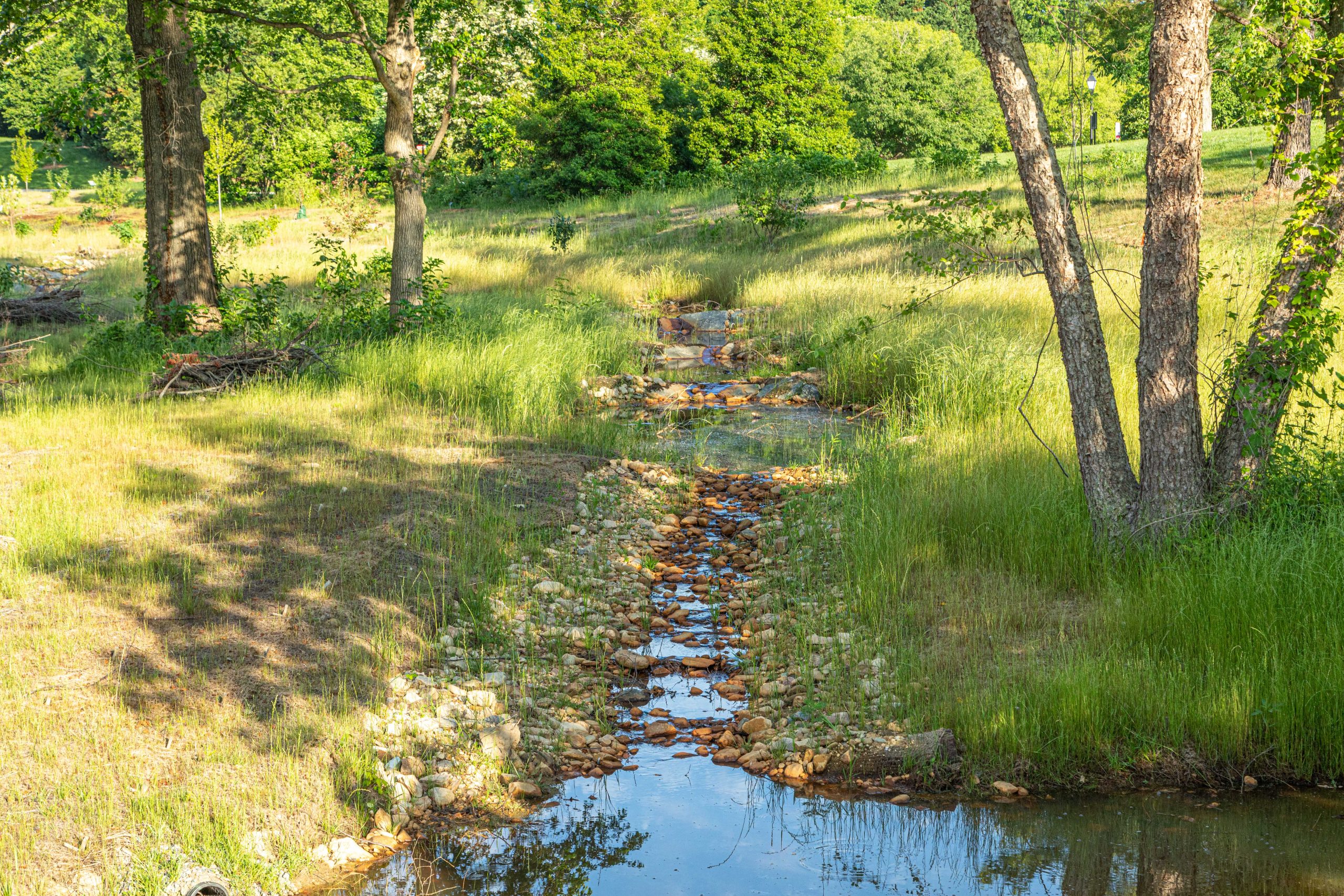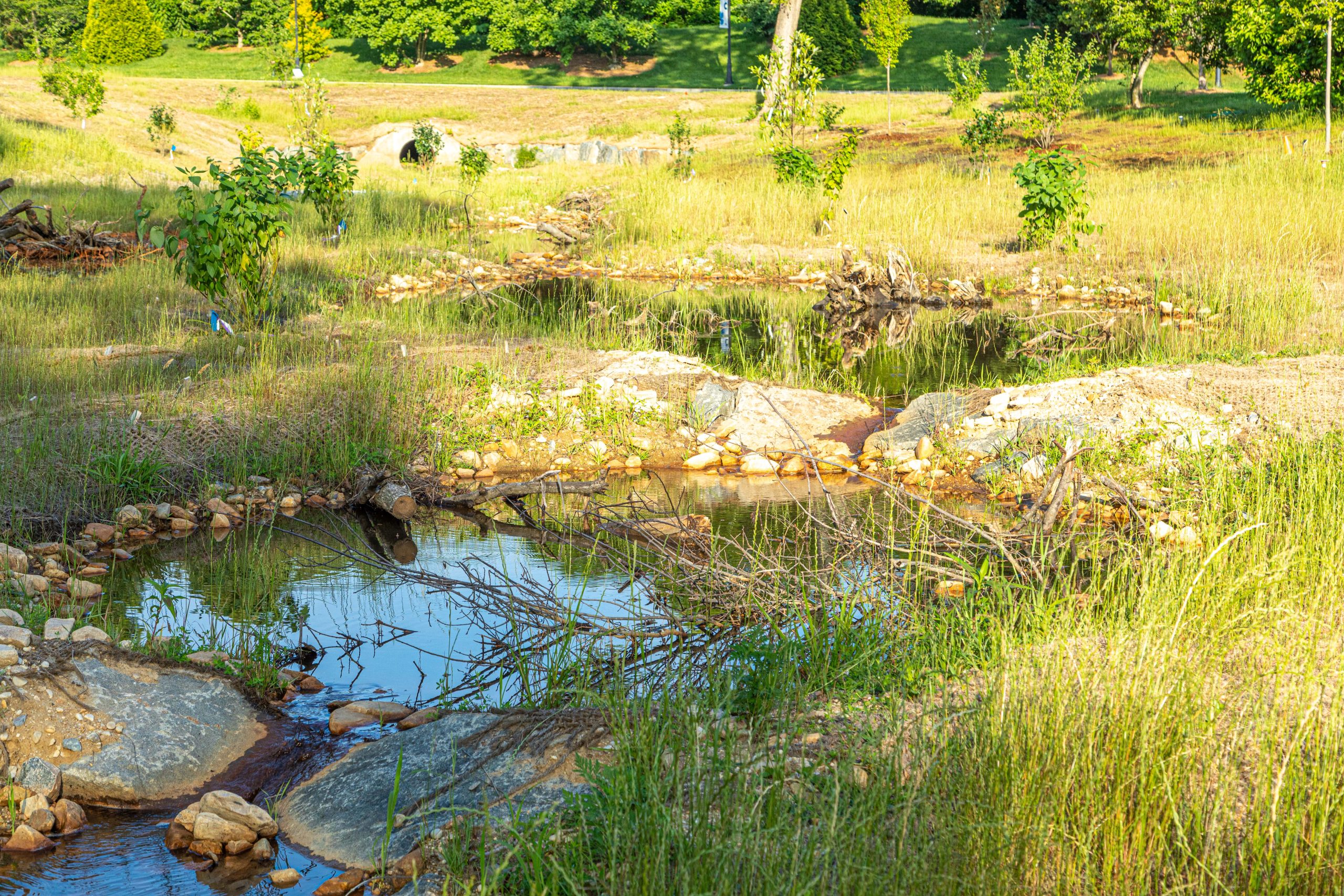Lewis Ginter Botanical Garden connects people through plants to improve communities.
Making a Difference Through Water Conservation
Environmental stewardship is central to our mission at Lewis Ginter: We connect people through plants to improve communities. Clean and fresh water is a limited precious resource necessary for life on earth. As global populations surge and temperatures rise, we consume our surface water at unprecedented rates. In our strategic plan, we have committed to promoting conservation — especially water conservation and environmental resiliency. Educating you and our entire community about what you can do at home to help the environment will help us all work together to make a difference.
Check out the Virginia Cooperative Extension’s series of fact sheets on Stormwater Management for Homeowners. To get started, try these three easy tips for water conservation at home:
- Use recycled water — you can collect it in a rain barrel or cistern, or if you have a larger property like Lewis Ginter Botanical Garden, you can collect it in a lagoon or irrigation lake. Recycled water is also cheaper (you don’t have to pay the county for it) and better for the ecosystem. Did you know that over 90 percent of the Garden’s grounds are irrigated by rainwater?
- Plant native plants that don’t need much watering. Get inspired by plant selections in our Morton Native Plant Garden.
- Water in the early morning (best option) or later in the evening when less evaporation is likely to occur.
Other steps you might take? Make your garden a Waterwise or xeriscape garden, working with nature and natural forces like rain to hydrate plants while conserving water. A Waterwise garden limits the overall amount of water you are using. While the total amount you water is dependent on many factors such as weather, soil type, type of plants, etc., the general rule is that watering more deeply

The meandering streambed of pools and riffles slows the water flowing through allowing time for plants to help remove pollutants. Images by Tom Hennessy
less often (say two times per week) promotes stronger, deeper root growth and more resilient plants. Also, you don’t want to water if your plants don’t really need it, so it’s a good idea to invest in a rain gauge, so you can see how much water your plants are getting from natural sources. A watering nozzle with a good shut-off valve that allows you to turn off the water or adjust the flow right where you are watering is a great investment.
The eight fundamentals of Waterwise landscaping are:
- Plan your landscape: group plants according to their water needs.
- Prepare your soil adequately. Make sure it’s healthy! (We offer classes on soil health at Lewis Ginter Botanical Garden.)
- Use native and low-water-use plants.
- Limit turf areas to those needed for practical uses (see the wattle fencing idea, above right).
- Use efficient irrigation systems.
- Schedule irrigation wisely.
- Remember to mulch.
- Provide regular maintenance.
Water Conservation Examples in the Garden
Restoring Resilience: The Glen Stream
The Glen Stream once flowed through a steeply eroded gully overrun with invasive plants and carried pollutants from one end of the Garden to the other. To restore the Glen Stream, we reshaped the land to create a meandering streambed of pools and riffles, then planted native trees, shrubs and plants. The result? A thriving ecosystem that attracts beneficial wildlife, including pollinators vital to human survival. Water now leaves our campus cleaner than it arrived, helping to create a healthier

The Glen Stream has been replanted with regionally native plants. Both beautiful and functional, these native plants stabilize the soil, feed wildlife, provide shade, serve as shelter, withstand rainwater inundation and remove pollutants from the water.
Chesapeake Bay watershed. The Glen Stream serves as a model of environmental stewardship and as a demonstration landscape where people can study and share issues related to water quality, wetland habitats, and native plant communities.
Cultivating Community Water Stewards: Sydnor Lake Edge
The Garden transformed the Sydnor Lake edge into a functioning illustration of best management practices by removing invasive plants, correcting problematic grading and soil compaction and installing a rain garden in a conservation landscape populated primarily with native plants. This site serves as an example that anywhere rainwater collects is an opportunity for water conservation that will help improve water quality locally and in the Chesapeake Bay.
Caring For Our Water Resource: Recycling for Irrigation
Perhaps you haven’t thought about the water that runs deep in the ground and channels around the Garden when you are utterly charmed by the radiant blooms above it. But amazingly, Sydnor and Wick lakes have supplied over 450 million gallons of collected rainwater to irrigate the Garden’s horticulture collections over the past 22 years. Both lakes were built specifically to collect rainwater and recycle it into water we can use to sustain our plants during dry spells. We collect water runoff from just over 40 percent of the Garden’s property and buildings.
We're Making a Difference
Read about our community enrichment efforts.
